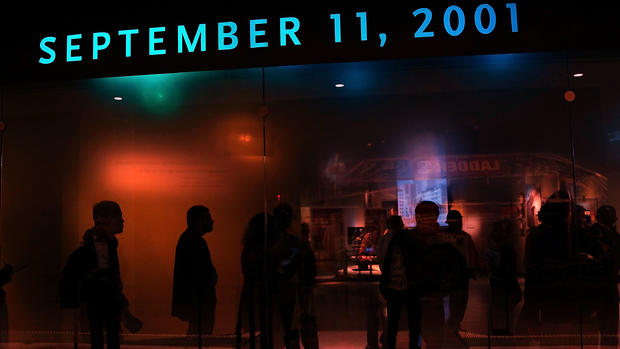9/11 museum: Stories of ordinary people who went to work and never came home
As Tanya Villanueva Tepper talked to students about what happened on Sept. 11, she wore the photograph of fireman Sergio Villanueva around her neck. They had been engaged to be married, reports CBS News' Don Dahler.
"When I realized that Sergio wasn't coming home, and then I became so compelled to share his story so the victims were not forgotten," Tepper said.
The museum is necessary, she said, in addition to the memorial site.
"Because people, long after we're all gone, they need to know the story of what happened that day," she said.
Dahler toured the museum with Alice Greenwald, the museum's director.
"The most intimate materials in this museum carry the biggest stories," Greenwald said.
Inside the museum, you descend a gently sloping walkway seven stories to Ground Zero, and the first thing that strikes you is the sheer size.
"As you come in and then you see this view and get a sense of the scale -- how big the space is," Greenwald said.
Work on the museum continued even as we sat in front of one of the large exhibits to talk.
"This truck -- so powerful," Greenwald said. "Every firefighter who responded from Ladder 3 that day never made it back."
The museum's design was not without controversy. It exists next to a repository holding thousands of unidentified remains. Decisions about which artifacts and which facts to include were often difficult to make. They put sensitive exhibits, such as pictures of people jumping from the burning buildings, inside alcoves with warning signs.
"It has to be presented in a sensitive way, in a way that is safe and responsible," Greenwald said. "You are not going to come into a cabinet of horrors, but the subject is horrible. So it's how you present it, and it's also how you balance that story."
There was concern that by having the hijackers be a part of the museum, they would be immortalizing them and glorifying them to like-minded people, Greenwald said.
"And that concern tempered the way we chose to present the story of the perpetrators," she said. "We're presenting them as criminals. That's who they were. It in no way glorifies them. It in no way suggests these are people we should emulate."
"They need to know that human lives were lost in a very senseless and tragic way and they have to have that personal connection to it," Tepper said.
Ultimately, the 9/11 museum is about the ordinary people like Sergio who went to work that day and never came home. Their photos and their personal items pack an emotional punch larger than any twisted beam or crushed fire truck.
Tepper's own journey since 9/11 has become part of one of the museum's exhibits. Her thoughts on loss and renewal are included in a time lapse film showing how the new tower rose from the literal ashes of the old.
"Hold your sorrow gently," Tepper said on the film.
She said it means don't be so hard on your grief.
"You treat your sorrow. You have the right to have that sorrow of the person you lost," Tepper said.
